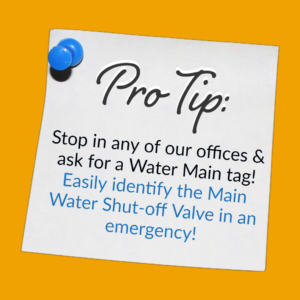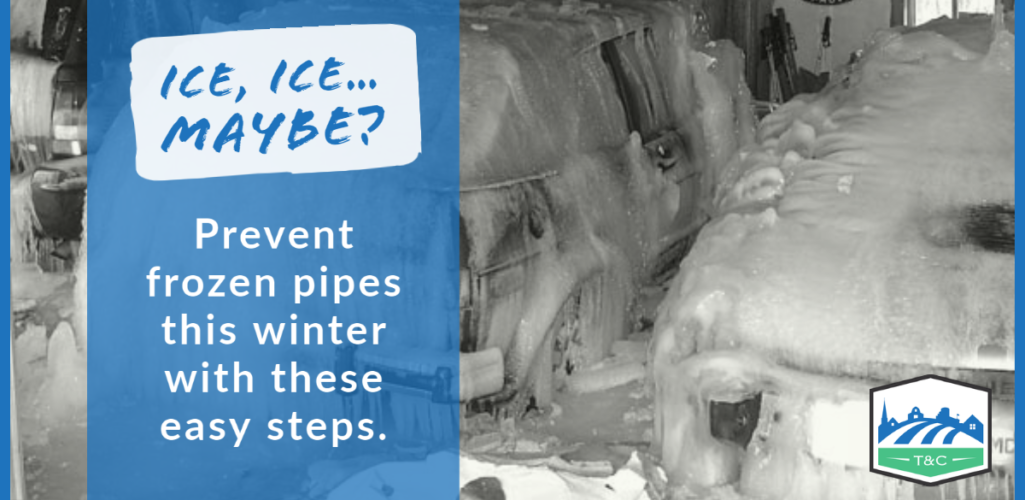Wintertime in Minnesota is generally enjoyable, but when it gets THIS cold, we need to consider potential damages. In this article – Frozen Pipes – Part I – we’ll cover how to prevent your pipes from freezing, and the accompanying water damage.
Pipes already frozen? Read our next article here!
Know What Pipes Are At Risk
Where would your water pipes be exposed? Follow water lines inside the house to those areas outside the home: bathroom, kitchens, laundry and hot water heater / water softeners are a good start.
Insulate Those Pipes
You can buy UL-endorsed heat tape; some even have a built-in thermostat. You may need additional insulation, so be sure to follow manufacturer suggestions. Another option is using foam rubber insulation. For pipes near a cold draft, you can use caulk to seal any cracks or gaps to prevent heat loss.

Don’t Forget Your Drain Pipes
You can use UL-endorsed heat tape for drain lines as well. Nothing worse than a frozen, backed-up drain line!
Be sure to check both up (attics) and down (basements, crawl spaces, etc.)
Other Tips & Signs To Look For
Here are a few other basics provided by RAM Mutual to help prevent Frozen Pipes and water damage caused by them.
- Washing Machine: Turn off your water lines to your washing machine when not in use. And don’t let your washer run when you aren’t there. Check the hose every six months; replay if fraying or rusting.
- Look for Signs: Condensation or corrosion in water pipes under the sink, water spots on walls or ceilings, rust in your tap water, cracked or warped flooring. All these could indicate faulty or leaking pipes. Find the source. Fix the problem.
- Monitor: Your water bill – big changes could alert you of a leak. Inspect pipes for insulation (or lack thereof) around on exterior walls. Monitor water alarms in utility rooms, bathrooms, under sinks & wet areas. Inspect your water heater yearly.
- Disconnect: If you haven’t already, disconnect water hoses from outside faucets/valves to prevent broken water lines.
Maintain Flow
Inside your home, be sure you set the thermostat at 55F or higher. Open those cabinets under sinks. In regards to water flow, it depends on your unique situation. We’ve all heard we should leave our faucets on at a slow drip, however this might not be a good idea for everyone. It depends on if you have a septic tank, city water, what your plumbing and insulation is like, etc. Look into it before leaving your faucet drip/run.
Is Your Home Vacant During The Winter?
If so, you have an added responsibility to protect it. Take these steps provided by RAM Mutual:
- Maintain heat in the residence. As mentioned above, a 55 degree temp is suggested.
- Install an alarm system wired to a 24-hour monitoring service, so you can be alerted if/when something happens.
- Shut off the water supply system at the meter or the main water valve.
- Arrange for a reliable person to inspect your home at least once a week.
- Contact us to be sure your policy would cover damage caused by frozen pipes. Each policy is unique, and each carrier is unique. It’s better to ask and prepare, than to find out afterwards.
As always, we are here to answer any questions you have. Water damage claims caused by freezing pipes can be expensive. Avoid an accident, avoid a claim.
FIND OUT IF YOUR POLICY COVERS DAMAGE FROM FROZEN PIPES
Data Sources: RAM Mutual and North Star Mutual




